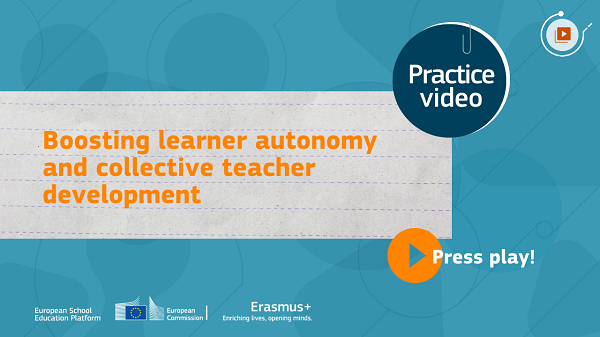Boosting learner autonomy and collective teacher development

Pelgulinna Highschool is a school in the city of Tallinn that belongs to the OECD network of educational innovation schools and where more than 900 children study. Children from the first to the 12th grade study together under the same roof. Our school is a community school, attended by mothers and fathers and grandparents of current students. Our goal is for graduates to be self-directed and able to learn.
The big goal of our school is to teach each student to learn independently and to plan their own learning. Our students are at school for four days and on the fifth day they study independently at home. A specific program has been prepared for this, which is put together by teachers of various subjects. On the day of independent study, the students apply the learning skills acquired at school into practice, they can study more consciously, plan their time and study more efficiently.
For me, the important thing about independent learning is that I learn to plan my time and I can do schoolwork at my own pace. I also like that the subjects are well connected. The best thing is that I can be at home.
From a parent's point of view, independent learning means that the child wakes up a little later in the morning, but it also means that the child has to plan their own time. Just like it happens in real life, in a real workplace. It also means developing the ability to make meaningful connections. On the risk side, the presence and necessity of a control mechanism must be taken into account in order to ensure the actual results that the child must achieve.
Connections create meaning. One of the strengths of the independent learning days is that students are given assignments that integrate several subjects. That makes the learning more meaningful and consequently more memorable. Thanks to John Hattie’s analysis of meta studies in education we know that collective teacher efficacy has a profound effect on student learning. And two things that this school is doing to promote collective teacher efficacy are: it has set up a specific time for teachers to cooperate every week and it has created teacher learning circles. These both should contribute substantially to collective teacher efficacy.
University studies make up only a very small part of learning to become a teacher and developing teaching competence. The main learning takes place while working and conventional training or self-improvement of individual teachers is ineffective. In Pelgulinna Highschool, teachers' joint learning was launched from 2018. This is a good example of how teachers' professional learning communities have been put into practice. Together, the teachers lead collective learning, form an understanding of the principles of learning and develop learning support materials in order to develop students into independent learners.
We want each of our students to be aware and effective in their learning. Teachers have a very important part in this, at our school they consciously collaborate on a weekly basis and prepare learning materials that support learning through connections, help to think critically, guide students to research and analyse what they have learned. Conscious cooperation between the student and the teacher supports the development of a self-directed learner.
Further reading
Additional information
-
Education type:School Education
-
Evidence:N/A
-
Funding source:Local funding
-
Intervention level:N/A
-
Intervention intensity:N/A
-
Participating countries:Estonia
-
Target audience:Head Teacher / PrincipalHigher education institution staffParent / GuardianResearcherTeacher
-
Target audience ISCED:Primary education (ISCED 1)Lower secondary education (ISCED 2)Upper secondary education (ISCED 3)
